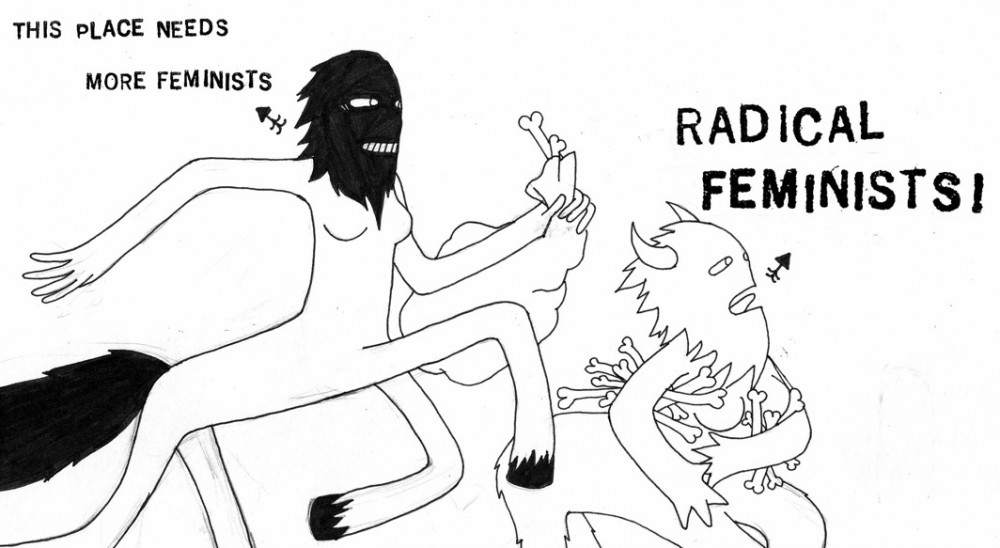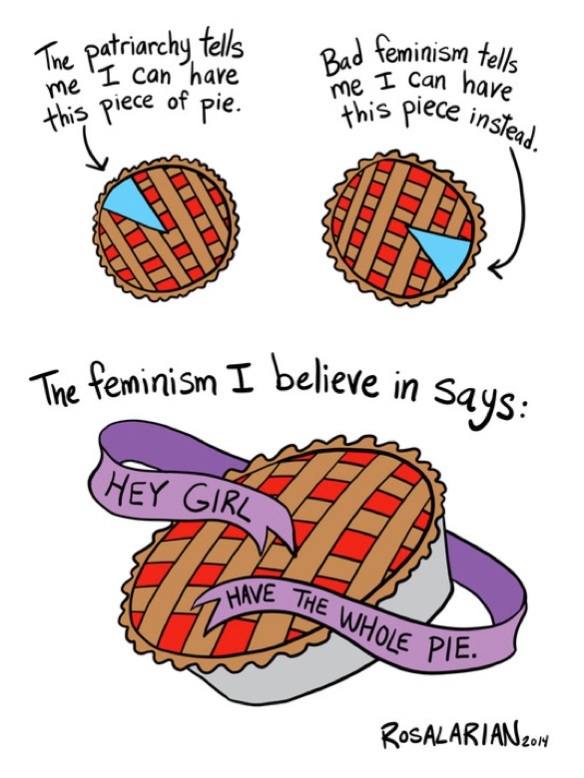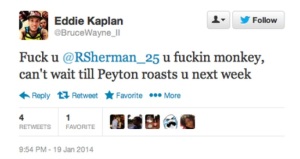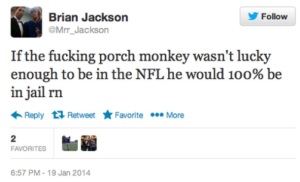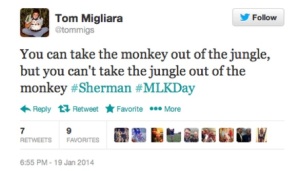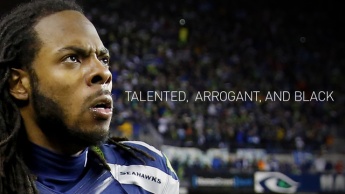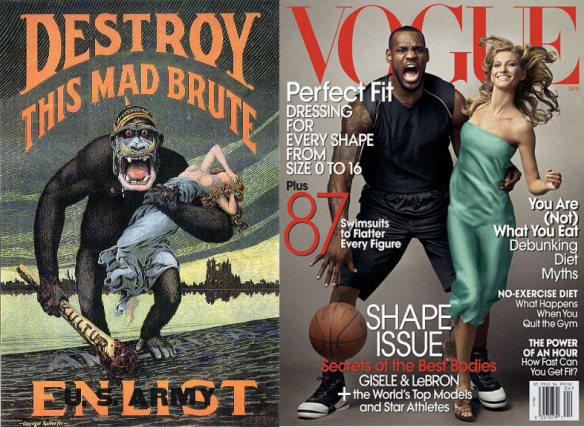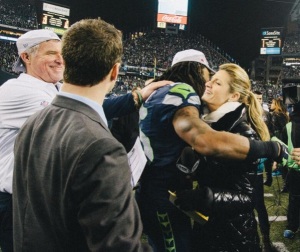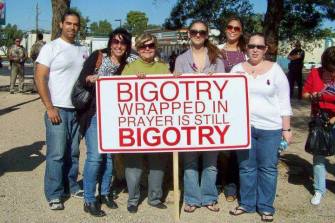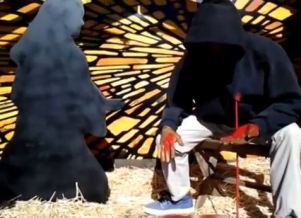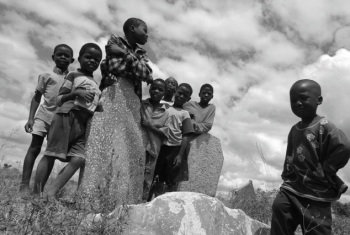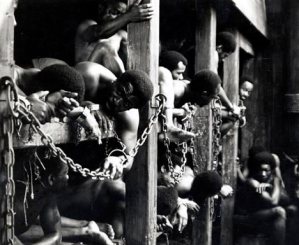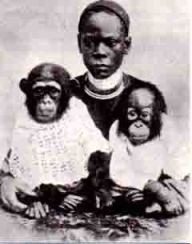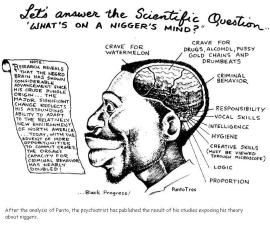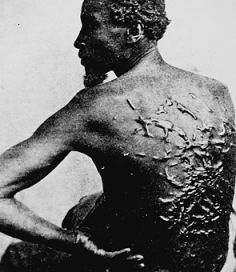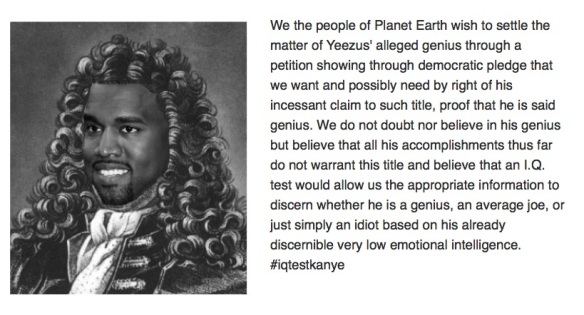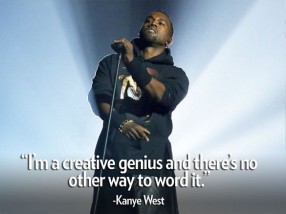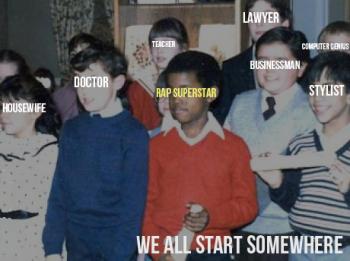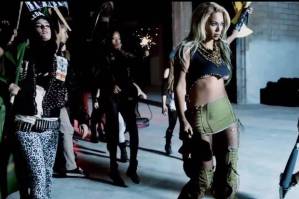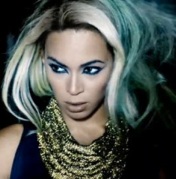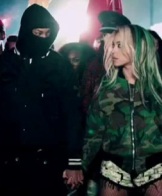Dear Belle,
You are now squarely in the belly of the beast: popular culture infotainment has sensationalized and dispossessed you of the right to straddle sex work with one leg and a Duke education with the other (pun intended). Academics, journalists and self-proclaimed intellectuals are gratuitously co-opting your story, decoding and deciphering and dissecting — which is to say, objectifying — you, your family, your decisions, and your ‘perverse’ sexual desires as a way to affirm their own authority as social scientists and public intellectuals.
While your financial considerations for sex work (i.e. a hefty $60,000/year tuition bill) have been met with curiosity and even praise of neoliberal ingenuity, the audacity of a young woman who might like sex work or feel empowered by pornography has been met with vitriol. And vitriol hurts, goddamnit. Sticks and stones are not the only things that break our bones, though I suspect you’ve received physical threats in addition to rhetorical whippings.
 I remain your fan, and am writing to celebrate your vulnerability as a shameless woman of sexual excess–because, to be clear, there is no shame in sex work, for profit or pleasure (or both); nor is there any shame in ‘rough’ or ‘humiliating’ sex, which I understand you participate in (to great scorn) as a sex-positive porn star. Leo Bersani and other radical-leaning queer theorists argue that these power dynamics are precisely what make sex exciting and excitable, and not just on camera, but in our real-life pursuits of sex. To claim otherwise is to lie to ourselves in the light of day, so that by the cloak of night we can throw out these ‘theories’ and submit to our most carnal sexual desires, having reassured ourselves that we’ve already done the ‘work’ of thinking through urgent questions about sex and power, or sex as power (and power as sex).
I remain your fan, and am writing to celebrate your vulnerability as a shameless woman of sexual excess–because, to be clear, there is no shame in sex work, for profit or pleasure (or both); nor is there any shame in ‘rough’ or ‘humiliating’ sex, which I understand you participate in (to great scorn) as a sex-positive porn star. Leo Bersani and other radical-leaning queer theorists argue that these power dynamics are precisely what make sex exciting and excitable, and not just on camera, but in our real-life pursuits of sex. To claim otherwise is to lie to ourselves in the light of day, so that by the cloak of night we can throw out these ‘theories’ and submit to our most carnal sexual desires, having reassured ourselves that we’ve already done the ‘work’ of thinking through urgent questions about sex and power, or sex as power (and power as sex).
 The culture or “campus climate” — to borrow from President Richard H. Brodhead — of Duke University, as you well know, is a petri dish for exactly this kind of double-standard. Work hard, play hard. Think by day, drink to forget (and to make questionable decisions that you are not accountable for) by night. Lest we forget, disassociating work from play — abandoning the critical thinking skills we learn in the classroom when we drink and fornicate — is what landed Duke in the eye of a media storm in 2006: a scandal almost eight years ago to the day (March 13, 2006) in which three white Lacrosse men were accused of raping (gang-banging, really) a black Durham stripper. You may recall that one Lacrosse player went so far as to email his team two hours after the alleged rape to request an encore in which he “kill[s] the bitches as soon as the(y) walk in” and “cut[s] their skin off.”
The culture or “campus climate” — to borrow from President Richard H. Brodhead — of Duke University, as you well know, is a petri dish for exactly this kind of double-standard. Work hard, play hard. Think by day, drink to forget (and to make questionable decisions that you are not accountable for) by night. Lest we forget, disassociating work from play — abandoning the critical thinking skills we learn in the classroom when we drink and fornicate — is what landed Duke in the eye of a media storm in 2006: a scandal almost eight years ago to the day (March 13, 2006) in which three white Lacrosse men were accused of raping (gang-banging, really) a black Durham stripper. You may recall that one Lacrosse player went so far as to email his team two hours after the alleged rape to request an encore in which he “kill[s] the bitches as soon as the(y) walk in” and “cut[s] their skin off.”
The Lacrosse men who fanned the flames of race- and sex-based hatred in 2006 are by no means exceptional. Consider, for example, the bully who outed you: that disgusting person known as Thomas Bagley –righteously exposed for his questionable proclivities by porn distributor Mike Kulich, who revealed in an open letter that 18-year-old Bagley finances his subscription to the hardcore porn site FacialAbuse.com using the “$200 a week [that his] parents send [him] …for living expenses”, likely “watching a new girl getting a huge cock viciously rammed down her throat” — or the typical sorority woman who can only ever experience sexual pleasure drunk and stammering, which is to say, incoherent and absent to her own body.
These Duke ‘types’ remain unproblematized while the world looks on at you through computer screens, watching videos of you in compromising sexual positions, ‘getting off’ without consequence — free from internal guilt or externally-imposed shame — leaving you with the heavy burden of justifying your choices while theirs go unchallenged. To borrow from your own beautifully-crafted words in last week’s interview with Piers Morgan, “The same society that consumes [you] is also condemning [you].”
I want to thank you for merging feminist ‘talk’ of sexual freedom with the real-life stakes of sex work. You don’t refuse one for the other; you don’t just do sex work, you think sex work, and you do/think the two simultaneously. I could have used a friend like you when I was an undergraduate at Duke (2003-7); when I was dancing on bars and tables and taking great pleasure in the voyeurism my sexual excesses elicited. I wanted to be looked at, and to be looked at that way. For me (as I suspect is the case for you), the male gaze I witnessed in TV or in movies and even at fraternity parties or at Shooters was not totalizing; to borrow from bell hooks, an ‘oppositional gaze’ in which women can enjoy being looked at and look back is entirely possible.
As an 18-year-old Duke freshman, I wanted to own the male gaze that existed on campus as the property of privileged white men with popped collars and distinguished pedigrees; to conquer this gaze and make it my own. To stare it in the eye without blinking. To have some fucking power over how I was perceived as a woman (of color) on Duke’s campus.
I took the feminist claim to the personal as political at its word, not realizing at the time that my greatest opponents would be women. I wrote about my sexual exploits for the school newspaper, revealing in my inaugural column (which I wrote and published as a Duke freshman) that “I own a little black book. I’m a regular at Shooters. And I like my men”. I went further to describe myself as
a “black lace bra kind of woman…, a tease and a twirl.” [As Sandra Cisneros writes,] I’ll “ruin your clothes” and “get you home way after hours.” I worship Victoria Secret instead of Ralph Lauren. And, like I said, I like my men. But if these men can be classy and be pimps and gigolos, then a pimpstress or gigolette can also be classy. In the spirit of promiscuity, I propose another, more modern definition for the term “hooking up.” In the very little time that I have spent at Duke, it has become painfully clear that there is something disturbingly and undeniably wrong with a culture that pushes a woman towards promiscuity and then chastises her for it.
My column went through several iterations and reinventions over the span of four years, but my questions remained the same: why is Duke’s campus so anxious to contain its women? Why aren’t Duke men obligated to contain themselves in any way? And how is race mapped onto sexual excess and/or containment on campus? The irreverent way in which I chose to ask these questions earned me hate mail and threat letters — one threatening rape, sent to my mother in an unmarked envelope — from the university community. I was also physically attacked on a number of occasions by Duke women for daring to defy and/or question their ideological infrastructures. Luckily, I fight back, and I fight hard.
I now teach critical race and gender theory as a doctoral candidate. My peers? They’re having kids, settling for the mediocre achievement of once-lofty life goals, and making the kinds of decisions that will lead to a loaded mid-life crisis in a decade or two. (In the meantime, and to borrow from a fictional Barney Stinson, “I’m just getting more awesome.”) There is life after (or past) respectability politics; more of a life, in fact, than the one awaiting the chaste, pearl-laden Dukie sitting next to you in class or on the campus bus.
You are being judged by a nation of hungry onlookers not because you have done something ‘wrong’, even in an Internet age in which your sexual exploits are a public commodity forever available in an online archive. This is not about you; you have been offered as a sacrificial lamb because of how these judgments position those people standing on high wagging a nagging finger at you–many of whom are women of considerable age and experience and education who should be standing with you in solidarity. Because isn’t that what feminism is all about? Women supporting women? Choice supporting choice? Not at Duke, and not in white feminist circles.
You may have seen by now Robin Kirk’s March 11th editorial in Dame Magazine (the magazine’s tagline is — cue patriarchy — “for women who know better“) in which Kirk, a Duke professor of ‘human rights’, calls you an ‘opportunist’ for using the banner of feminism to understand your participation in pornographic sex work as an empowering labor. Kirk’s editorial — which claims ‘insider knowledge’ because, as a member of the university community, she is a witness to the kinds of pressures Duke women experience — polices the boundaries of who can legitimately claim feminism and who cannot, and follows in the long line of slut shaming that white feminists are beholden to when they sign their name on the dotted line of respectability politics.
If [Belle had] only stayed at Duke a little longer—and I, for one, hope she returns [from her leave of absence]—she would have learned from a number of my fellow faculty members that there is a canyon between sexuality and pornography, an ocean between feminism and “facial abuse.” Pornography is fine if it’s what you want, but Knox’s argument that she’s producing something “feminist” doesn’t get my passing grade.
…In fact, Belle is feeding precisely the monster that makes college life for women such a contemporary bear. The culture wants young women to be pornified. It pornifies them even before they hop the L.A.-bound flight Belle flies to film. It pornifies them as teens. It pornifies them as little girls who plaster on unneeded makeup and false eyelashes and butt-enhancing heels.
…I just can’t see the feminist argument here. What Belle has done is simply take the culture at its word. If it’s porn you want, she’s serving it up, in exactly the format and style that the culture relishes. I imagine she’s not the first college student to work in porn. Indeed, the Duke label has boosted her videos into true star status, a triple-play for fans: young, brainy, and spread-eagled. But it’s the same old same old, in pretty stockings and a stained bow.
Kirk’s op-ed does an infuriating disservice to your autonomy as a sexual being, and I want you to know that there are people out there (myself included) who see this gratuitous ploy for what it  is: an op-ed that says more about Kirk than it does about you. A credit to your genius, you preempt Kirk’s criticism when in an interview with The Chronicle — Duke’s daily student newspaper — you reflect that feminism (not your feminism, but surely Kirk’s) differs little from patriarchy:
is: an op-ed that says more about Kirk than it does about you. A credit to your genius, you preempt Kirk’s criticism when in an interview with The Chronicle — Duke’s daily student newspaper — you reflect that feminism (not your feminism, but surely Kirk’s) differs little from patriarchy:
“I think the thing lacking in feminism is that women are making decisions for other women. If the patriarchy is about men making decisions for women and taking away their agency, why do some feminists want to control other women’s decisions?”
Kirk not only patronizes you — I wonder, did she attempt to reach out to you privately before blasting you online? — but in fact grossly abuses her power as an educator to punitive ends. To borrow from a fellow Duke alumnus, “Since when is it okay for professors to publicly comment on and criticize students, especially when the critique has nothing to do with academia?”
(If I had the time or the energy — or even remotely cared about initiating a conversation with Kirk — I would write a second open letter; this time to Kirk, to remind her that one of the first rules of the academy is: thou shalt not trample students on your way to the top. You are supposed to be their advocate. Hell, you’re supposed to be their friend.)
Not too long ago I was a Duke undergraduate making similar choices, and feeling terribly disappointed when those people who were supposed to be my allies and champions were using my experiences, scandalous as they might have been, to empower only themselves. I even ‘made it’ into a self-help book–cum-expose authored by a Pulitzer Prize-winning investigative journalist; convinced she was my friend, I let the author, Laura Sessions Stepp — a white feminist in her 60s who was ill-prepared to understand the nuances of sex as power, and power as sex — reduce me to a caricature. Had I your courage to call my own shots and had I not been so desperate for the kind of validation I thought only an older (white) feminist could give me, I would not have allowed Stepp to commodify my story. I would have found other ways to validate myself, like sex work, which would have paid the dividends I never received (but was surely entitled to) as a subject in Stepp’s book.
 My decisions in college about when, where and how to have sex and, likewise, my decision to write openly and honestly about my sexual dalliances empowered me as a woman, as a feminist, as a Duke student, and — I would later come to find out — as a scholar-activist. But it’s a hard knox life out there for people like us; few of my Duke peers actively voiced their support of my sex-positive feminism. Many looked on as spectators, mouths agape, whispering to each other, but few wanted to know me or call me a friend.
My decisions in college about when, where and how to have sex and, likewise, my decision to write openly and honestly about my sexual dalliances empowered me as a woman, as a feminist, as a Duke student, and — I would later come to find out — as a scholar-activist. But it’s a hard knox life out there for people like us; few of my Duke peers actively voiced their support of my sex-positive feminism. Many looked on as spectators, mouths agape, whispering to each other, but few wanted to know me or call me a friend.
You scare these peers with little to offer in the way of complexity, because you’re sexy and you’re sassy and you’re educated and you know it. You’re even uppity: you want it all, and you won’t apologize for wanting it all. From one retired Duke sex kitten to the new guard of this mantle (if I might be so bold as to call you that), I want to remind you that yours is not Gloria Steinem’s feminism, or Robin Kirk’s; and though that makes your sexual performance unintelligible to the modern ‘feminist’, there are those of us out there who get you, girl, and who stand firmly in your corner.
